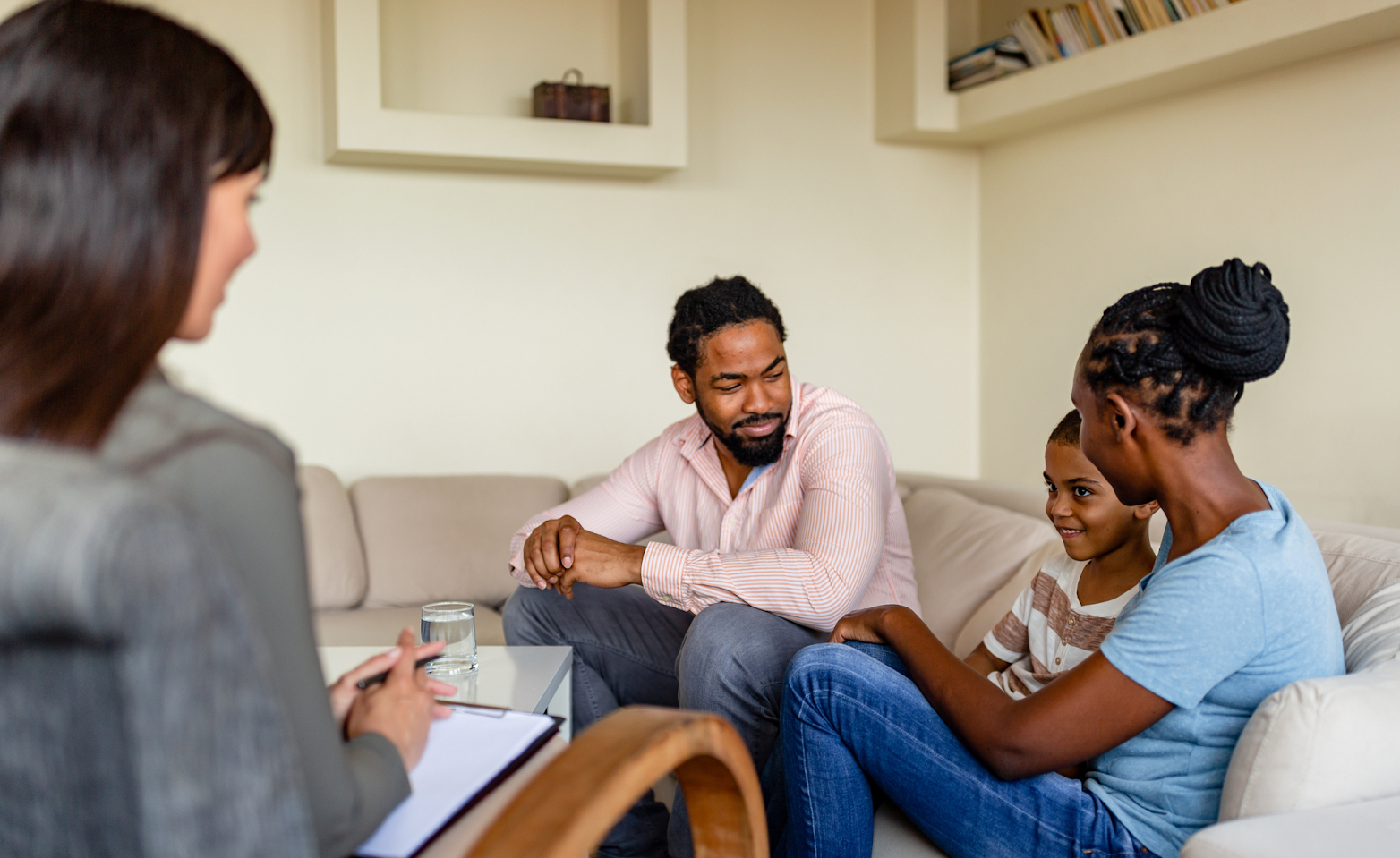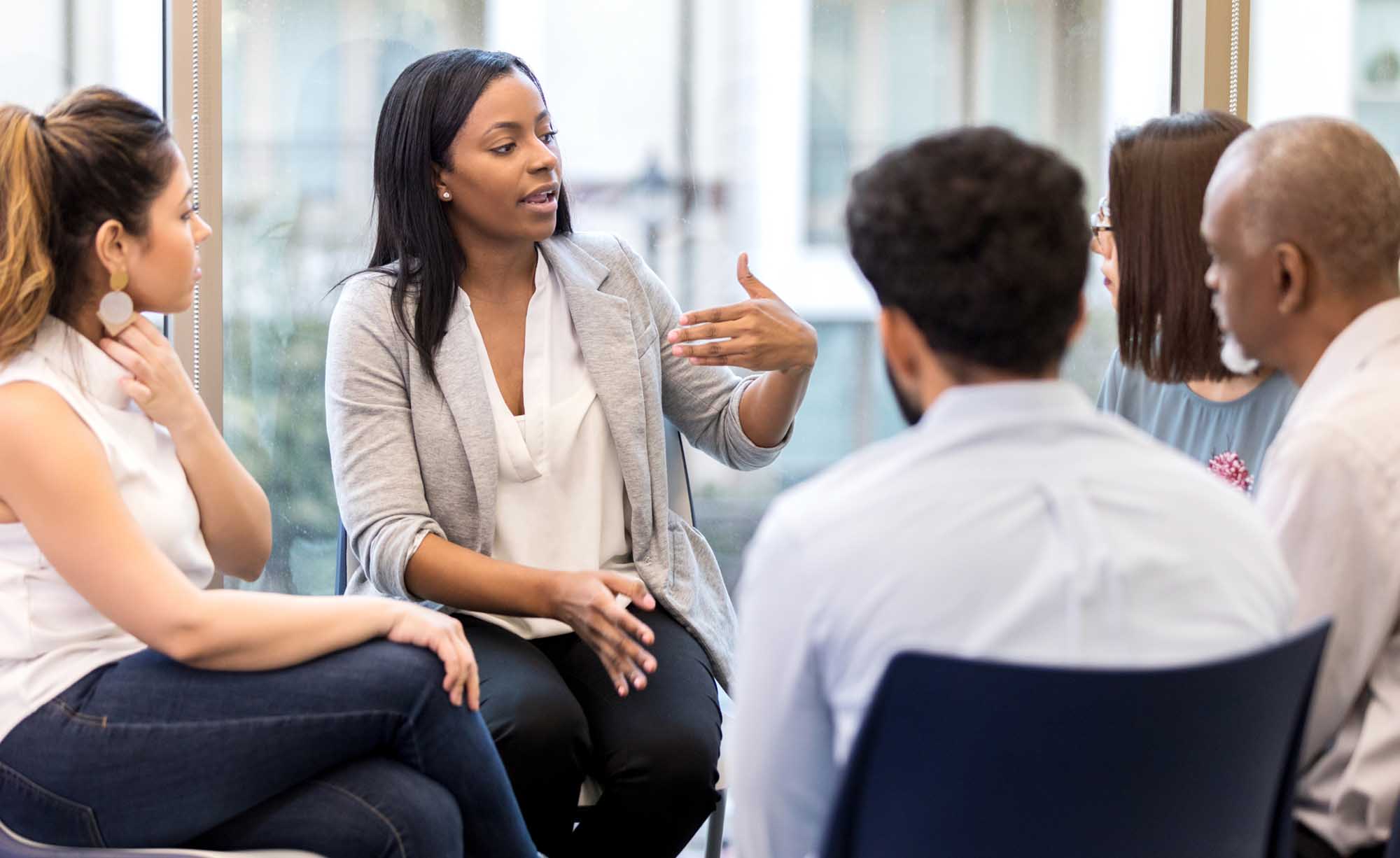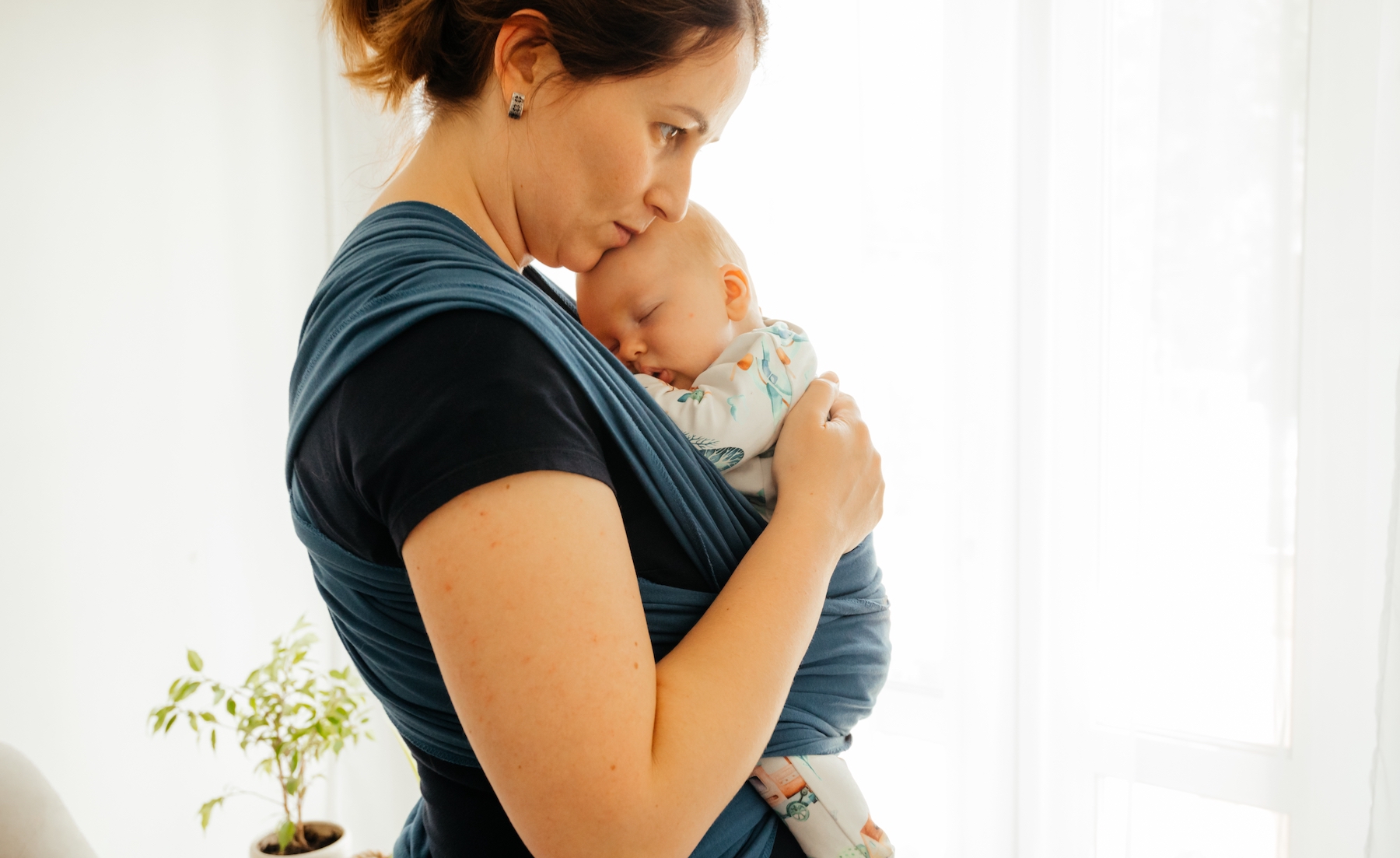The Color of Adoption: Who’s Reaching out to the Black Community?
Adoption Advocate No. 116
Lori and Joy met at National Council For Adoption’s 2016 National Adoption Conference, where they discovered a shared purpose of building a positive adoption culture within the Black community. With Lori’s experience as a family law attorney and Joy’s experience as a birth mother and community adoption advocate, the women co-founded Black Adoption Story, an organization that is dispelling myths and encouraging conversation within the Black community about adoption.
Lori and Joy believe that—with financial and legal resources, social and educational resources, and community partnerships—adoption can be a positive option for young Black women facing unintended pregnancies or Black men and women who have room in their hearts and homes for a child by adoption. This article is their call to action.
Why Reach Out to the Black Community?
We are writing about something near and dear to our hearts and which concerns us greatly: The lack of Black families who choose adoption for their family plan.
We address our attention to women experiencing unintended pregnancy and countless Black parents who could provide Black children with a stable, loving, permanent adoptive home.
We want to be a conduit that advocates and encourages the option of adoption for Black families. Our goal is to be heard across the nation to reach all members of Black communities to have them consider the beauty that adoption may offer them.
The 2017 State of America’s Children report’s statistics paint a terrifying picture.1 They are part of a horrifying narrative.
- 136 African American babies are born to a teen mother every day. That’s one baby every 11 minutes, 49,640 babies per year. A new baby is a challenge to any new parent, but for the teen mother who has not had the chance to finish growing up, or finish high school and further her education to help provide for that baby, the odds are stacked against her.
- Each day in America, 370 African American babies are born into poverty (or 135,050 per year) and 233 into extreme poverty (or 85,045 per year). The 2016 poverty threshold for one person was $12,228 in yearly income, or $24,563 for a family of four.What exactly is extreme poverty? In this study, “extreme poverty” is defined as half of the povery threshold. Originally defined by the United Nations in 1995, extreme poverty worldwide is “a condition characterized by severe deprivation of basic human needs, including food, safe drinking water, sanitation facilities, health, shelter, education, and information. It depends not only on income but also on access to services.”2 Many in our country would be surprised to hear this is true in the United States—not just in third world countries.
- African American children only make up 14 percent of children in our population in the U.S., but they make up 23 percent of the adopted children population.3
- Each day, 18 African American babies die before their first birthday, a total of 6,570 per year.
These statistics tell us much more should be done in the U.S. to address this issue, but until that happens, we believe that Black communities need to be doing more now for our children.
Why Focus on the Black Adoption Story?
We believe there is a myth about adoption that feeds long-kept secrets in the Black community: That myth (what we like to refer to as “the story”) is that “we don’t do that” with our children. We, in the Black community, don’t place our children for adoption.
And, while adoption may appear to be rare, the fact is that many Black women do choose adoption for their children because they have concluded that it is in their and their child’s best interests. They often make an adoption plan, however, in secret as to avoid the stigma and judgement they will receive from their family and community.
The reality is this: When you take into account the above statistics, adoption may have been the best chance for a better future for an expectant mother and her Black child. Adoption can prevent a life cycle of poverty and death by giving the mother and child a new chance. Adoption may, in fact, be an empowering decision for an expectant woman who concludes that adoption is the right choice for her and her baby.
As we have already mentioned, it should be acknowledged that adoptions already happen in the Black community. It happens in the form of “they went away and now...look how skinny they are.” It happens in the form of grandparents parenting grandchildren. And, unfortunately, it also happens with forced relinquishment to the child welfare system.
A positive, accurate narrative of adoption must replace the current myth of adoption. We can do that through the telling of real stories.
Some may ask: Why did you choose stories as a means to change the negative perception of adoption?
The Black community has a long, rich history of oral traditions and storytelling. In Africa, storytellers were held in high esteem. During slavery, when knowing how to read or write was against the law, stories and songs were the only way to share the hiSTORY of the culture. Call-and-response songs like “Guide Me Oh Thy Great Jehovah” guided many runaway slaves to freedom. Quilts were made with hidden meanings that only those who had heard the story would understand. Those quilts helped guide the way to the Underground Railroad.
Stories created a culture; stories still do. However, the culture and stories look different now. Families look different. The communities of the Baby Boomer generation are vanishing. Gen X’ers moved away from “the village” and Millennials communicate in the Cloud.
In order for “our” stories to change, we have to change how we reach out to all members of our families. We also have to adjust our view of community. We have to change our source of stories and the mediums used to tell those stories.
These days, it seems the place of the elders as honored storytellers is reserved for family reunions or, more often than not, replaced by social media. The storyteller today goes by many names: preacher, rapper, actor, reality show celebrity, healer, teacher, comedian, singer, poet, dancer, artist, and historian.
Villages are now called Facebook, Twitter, Instagram, and Snapchat. Yes, an entire narrative can be created and driven from a simple post. It is up to those trying to change the narrative—the myth that “we don’t do that”—by using all storytelling mediums to shape a new story for our new community.
No one can say with certainty what started the myth of “we don’t do that” in regards to adoption. What we can say is that it’s a pervasive and destructive mindset that is reflected quite dramatically in statistics on adoption. It’s not just expectant women don’t consider adoption; we also don’t consider adopting children into our families. While 35 percent of children adopted through foster care are Black, only 27 percent of children adopted through foster care live in Black households.3
It is time to create a village of positive adoption storytellers. We can change this narrative when people will stand up and say, “I chose adoption and I’m proud of it!” When this happens, we can be supportive and unite in the positive narrative of “it does happen in the Black community.”
What Does Black Adoption Story Do?
We founded the Black Adoption Story initiative with the goal to change commonly held myths about adoption and, by changing the false narrative, we change lives.
We do this from two overarching strategies:
- To advocate and educate for adoption in the Black community
- To advocate and educate in the adoption professional community
The good news is—and we are very encouraged to report—that we are not alone: Other organizations are also working to change the story and improve lives in the Black community.
Our Call to Action
Outreach should be a multi-faceted approach. Outreach is not one-size-fits-all for the Black community, and that is important for adoption professionals to know. It is every day, 365 days a year. It is too important to only attempt or recognize on Martin Luther King, Jr.’s birthday, during Black History Month, at National Council For Adoption’s annual conference, or for National Adoption Month.
How do you make it part of your agency or organization’s daily priorities?
There are target areas that we believe are crucial in reaching out to the Black community. Black Adoption Story recommends this four-strategy approach to engage the Black community:
- Community access to social resources
- Community access to financial resources
- Community access to legal resources
- Community partnerships with the child welfare system
We provide the following examples of organizations implementing each of these strategies:
Community Access to Social Resources
One successful example of social resources is The Ardythe & Gale Sayers Center for African American Adoption (Sayers Center), named after NFL Hall of Famer Gale Sayers and his wife, who are adoptive parents. The Sayers Center is part of The Cradle’s domestic adoption program in Chicago, and is one of the only programs in the country that promotes adoption and adoption awareness specifically within the African American community.
The goal of The Sayers Center is to find permanent, loving homes for African American babies, and to give expectant women of color a greater choice of adoptive families. They achieve this through outreach in the African American community: Educating people about the myths and realities of modern adoption, and actively recruiting African American adoptive parents.
Since its inception in 1999, The Sayers Center has placed more than 800 African American babies with nurturing families.4
Community Access to Financial Resources
There are several organizations that provide financial resources for prospective adoptive parents, including The Tinina Q. Cade Foundation (Cade Foundation) in Baltimore, Maryland. In addition to their education and support programs for families struggling with infertility, The Cade Foundation also provides grants of up to $10,000 for families pursing infertility treatment or adoption. They also underwrite conferences to share about different ways to become a parent after an infertility diagnosis. Their outreach ensures that people in the Black community facing infertility have access not only to educational and support resources, but also to financial resources to pursue adoption.
These programs take place throughout the nation and are live-streamed as well. To date, The Cade Foundation has hosted hundreds of outreach events, including in church communities throughout the U.S. It has provided 74 families nationally with grants for adoption and fertility treatment and hosted over 220 conferences.
Community Access to Legal Resources
When facing a difficult or thorny legal issue, birth parents and prospective adoptive parents need to have access to competent legal resources. For members of the Black community—a community that has historically been disenfranchised from legal protections—having an attorney who is both ethically minded and vetted for competence is extremely important.
The Academy of Adoption and Assisted Reproduction Attorneys (AAAA or “quad A”) is a network of lawyers who have been in practice at least five years, meet membership criteria in terms of experience and/or expertise, and meet (plus continue to subscribe to) the high ethical standards of the organization.
The attorneys bring with them a wealth of knowledge necessary to complete the toughest legal issues in adoption. A knowledgeable adoption agency or adoption attorney is necessary to ensure that all the paperwork is done in the proper form, so that there are no hiccups after the process is completed.
Have consents been worded correctly? Are the terminations completed? Has notice been given to everyone who needs it? If visitation and or contact privileges are being retained, are they in the best interest of the children? The adoption process is full of legal questions, and a competent attorney can help answer them.
Community Partnerships With the Child Welfare System
There are a disproportionate number of Black children in the child welfare system. What is happening to these children? Do they remain in the system until they emancipate, never finding a forever home? Are they adopted by their foster parents? Are they placed with and adopted by family members? These are the questions that organizations focused on changing the Black adoption story should be asking.
Certain characteristics of the child welfare system may affect the services and outcomes of children of different races and ethnicities. For example, a review of the Michigan child welfare system identified several institutional features that negatively impact children and families of color, including limited access to court-appointed special advocates, contracted agencies not providing services in African American communities (even when required to do so), and a lack of quality assurance measures that may help identify and correct differential treatment.5 A successful example of an agency and system partnership is Monarch Family Services in Houston, Texas. Monarch provides pre- and post- adoption services. Its mission and purpose is to seek a stable, nurturing, forever home for every child who is eligible for permanent adoption, regardless of race, ethnic background, or physical or emotional challenges.
Monarch Family Services directly assists kinship families with complying with the Department of Family and Protective Services’ (DFPS) minimum standard requirements of an adoptive home. This is done in multiple ways, including providing Home Development Kits for every family that include fire extinguishers, safety ladders, first aid kits, fingerprint cards, etc.
Monarch has a “Kinship Adoption Program” that targets families who are:
- Interested in only adoption, not foster care;
- Unable to qualify for foster care verification but interested in adoption; and,
- Licensed with a foster care agency that does not have an adoption contract.
What Can You Do?
Join Black Adoption Story in addressing the myth and promoting a new narrative about adoption in Black communities by taking action in the following ways:
- Creating community adoption action plans based on the four primary target areas.
- Building strategic community partnerships.
- Offering referrals for adoption service.
- Participating in the annual Black Adoption Professionals meet-up.
- Facilitating speaking engagements and workshops that focus on engaging the Black community with this new, positive narrative of adoption.
References
- The State of America’s Children, Children’s Defense Fund, 2017 http://www.childrensdefense.org/library/state-of-americas-children/2017-soac.pdf
- “Extreme Poverty,” Food for the Hungry https://www.fh.org/our-work/extreme-poverty/
- “Adoption USA. A Chartbook Based on the 2017 National Survey of Adoptive Parents.” Office of the Assistant Secretary for Planning and Evaluation. November 1, 2009. https://aspe.hhs.gov/report/adoption-usa-chartbook-based-2007-national-survey-adoptive-parents
- “Black Children Matter: Raising Awareness About Adopting Black Babies.” Bean Soup Times. November 23, 2016. https://www.beansouptimes.com/
- “Racial Disproportionality and Disparity in Child Welfare.” Child Welfare Information Gateway. November 2016. https://www.childwelfare.gov/pubPDFs/racial_disproportionality.pdf



